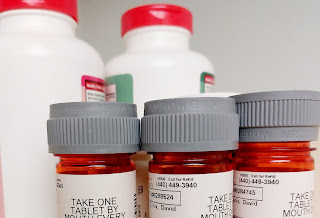It is entirely fair and
reasonable to ask, “What changed?” What
is the difference between purchasing a health policy now in July 2021 vs.
twelve years ago in 2009? And yes, there
are significant differences. Here are a
few:
·
Insurance
Companies in our market
·
Insurance
Products
·
Who can purchase
insurance
·
When you can buy
a policy
·
Insurance
premiums
We once had lots of
insurers. Now there are only a few in
each area. My market is the State of
Ohio, but my friends from around the country report the same thing. Some states only have one or two insurers
offering comprehensive major medical coverage.
Major insurers with well-known names abandoned entire states. Some, like Anthem Blue Cross, have started to
reenter the individual health insurance business in selected counties. They carefully pick their spots and severely
limit the doctors and hospitals in their networks as they search for a way to
make this segment of the industry profitable.
This leads us to the next
big change. Most of our policies in 2009
were PPO’s, Preferred Provider Organizations that provided access to doctors
and hospitals around the country. All of
our current policies are HMO’s. Our
clients are limited, except in the case of an emergency, from accessing care
outside of a very narrow network. This
is done to control costs.
Our 2021 products are more
comprehensive. The Patient
Protection and Affordable Care Act (Obamacare) requires all
policies to include the ten Essential
Health Benefits (EHB):
1.
Ambulatory
patient services
2.
Emergency
services
3.
Hospitalization
4.
Pregnancy,
maternity, and newborn care
5.
Mental health and
substance use disorder services
6.
Prescription
Drugs
7.
Rehabilitative
and habilitative services and devices
8.
Laboratory
services
9.
Preventive and
wellness services
10. Pediatric services
It may seem sound odd now,
but in 2009 women had a difficult time finding a policy that covered maternity. Mental health treatments, doctors’ visits or
medications, were excluded or severely limited in many of our policies in 2009.
The Who and When are the reasons for today’s
post.
Arnold (name changed) has
finally decided to devote himself full-time to his business. He had been operating it for several years as
a “side-hustle” while working in a totally unrelated field. His job gave him
security and health insurance. His
business allowed him to explore both his creativity and his full potential. COVID made the job less and less secure. And now is the time to jump. He was in my office today to get health
insurance. If this had been 2009, I
would have welcomed him into my office and started the process. There wasn’t an Open Enrollment Period in
2009. He could apply at any time. I would have asked him a lot of questions
about his health, occupation, hobbies, and driving record. And then I would have apologized after
explaining that we were not going to be able to secure coverage for him through
normal channels. The problem is that
Arnold has a few interesting medical conditions and he weighs 300 pounds. Health insurance was one of the main reasons
that the Arnolds chose to work jobs with benefits and weren’t able to create
new businesses in 2009.
Today is July 29,
2021. Arnold’s previous employer has yet
to provide him with the needed documentation proving that his group policy has
ended. That isn’t a problem because this
administration created a special enrollment period from March 15, 2021 to
August 15, 2021. For Arnold the big
question was whether he wanted the Medical Mutual of Ohio policy that gives him
access to the University Hospital System or the Cleveland Clinic + Oscar
policy. The policies are guaranteed
issue and preexisting conditions are covered.
The entire process took only a few minutes.
The last change is the
cost. Obamacare created Tax Credit Subsidies
to help individuals and families earning less than 400% of the Federal Poverty
Level pay for their premiums. President Biden has
expanded that
benefit. Are premiums higher
in 2021? Of course. Wouldn’t it be odd if you could improve the
benefits, insure anyone, and cover preexisting conditions without increasing
the price?
Are we better now than we
were in 2009? As always, it depends on
who you ask. If you were a very healthy,
young, single male in 2009 your coverage would have been a whole lot cheaper
than your 2021 counterpart. If you are
Arnold or one of the 50
million Americans with preexisting conditions, health insurance,
the way most Americans access and pay for health care, is a lot better today.
My opinion? I want Arnold, every Arnold, to fully explore
his/her creativity. Access to insurance
should never stand in their way.
DAVE
www.cunixinsurance.com
Picture – I Was So Much Older Then – David L Cunix















